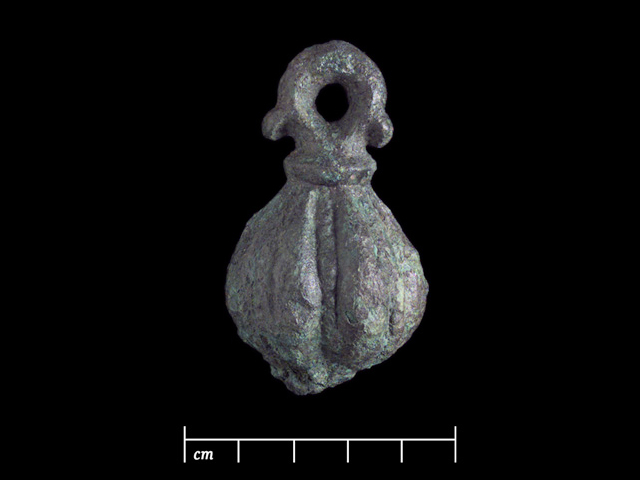 STUDIO PHOTOGRAPHS
STUDIO PHOTOGRAPHSIntroduction | Research | People | Tools
 STUDIO PHOTOGRAPHS
STUDIO PHOTOGRAPHS
LASH-BALL (TYA 631: 190)
Type: Lash-ball, bronze.
Use: Weapon.
Site: Raisio, Ihala, Mulli abode.
Period: Early Middle Ages.
Dating: Ca. the 13th century.
Size: 36 mm x 63 mm x 9-32 mm.
Photographer: Antti Huittinen.
Used as weights for whips, these lash-balls have been traced to the nomadic peoples in the area of Volga and Don in the 5th-9th century. In western Russia they appeared in the 10th century.
The origin and spread indicates that the lash-balls may have been connected to battles on horses. The horseman had a lash with a shaft in his hand and there was a ball in the end of the lash as a weight. The balls are relatively light; they weigh just 200-250 grams. The oldest lash-balls were made of auters and they have a loop in the other end for tying.
Iron and bronze balls were used whose surface was either smooth or ornamented. Ornamental motives of lash-balls include knots, trees of life, birds, lions, the so-called Rurik's signs etc. In the Middle Ages the balls were ornamented with complex silver and niello ornaments. Some mediaeval lash-balls bear signs of families. In Russia, lashes with balls as weights remained in use as war weapons until to the end of the 16th century.
In central and northern Europe, lash-balls are very rare. In Finland, only three items of this type have been discovered and in Germany one. According to the Estonian weapon expert Ain Mäesalu, no exact equivalent to the lash-ball of Mulli is known anywhere.
Other related topics:
Coordinates: x=96, y=508-509, 1st layer.
Introduction | Research | People | Tools